Botanical Name: Acer circinatum
Common Name: vine maple
Family: Sapindaceae
Distribution/Origin: Alaska, Northern California
Leaf: glabrous leaves, hairless petiole, circular, shallowly lobed, opposite, palmate
Bud: twin terminal buds, exposed, opposite
Flower: dark red calyx, 5 short greenish-yellow petals, open corymbs
Fruit/Seed: wide samara angle,
Stem/Bark: green stems, branches, flexible, lenticiled
Size: 15’ height
Habit: multistemmed, crooked branches
Form: erect shrub, arching (branches can grow along ground and send out new roots)
Soil Conditions: tolerates wet or dry soil, adapted to many soil types
Moisture: like moisture but can tolerate drought once well established
Sun: part shade, dappled sun
Exposure: leaves will burn if exposed to full sun, especially if experiencing drought
Landscape Use: under story in forests
Notes: common name comes from plants tendency to send out lateral shoots along ground like “vines” and take root
Common Name: vine maple
Family: Sapindaceae
Distribution/Origin: Alaska, Northern California
Leaf: glabrous leaves, hairless petiole, circular, shallowly lobed, opposite, palmate
Bud: twin terminal buds, exposed, opposite
Flower: dark red calyx, 5 short greenish-yellow petals, open corymbs
Fruit/Seed: wide samara angle,
Stem/Bark: green stems, branches, flexible, lenticiled
Size: 15’ height
Habit: multistemmed, crooked branches
Form: erect shrub, arching (branches can grow along ground and send out new roots)
Soil Conditions: tolerates wet or dry soil, adapted to many soil types
Moisture: like moisture but can tolerate drought once well established
Sun: part shade, dappled sun
Exposure: leaves will burn if exposed to full sun, especially if experiencing drought
Landscape Use: under story in forests
Notes: common name comes from plants tendency to send out lateral shoots along ground like “vines” and take root

Botanical Name: Acer griseum
Common Name: paperbark maple
Family: Sapindaceae
Distribution/Origin: China
Leaf: tri leafed, compound, blunt toothed margin, broad
Bud: opposite, twin terminal, clasping petioles, exposed
Flower: androdioecious, pendant corymbs
Fruit/Seed: paired samara with two winged seeds, green flowers (insignificant)
Stem/Bark: peeling bark, orange to red, smooth, though fissured in old trees, shoots are densely downy until maturity, exfoliating
Size: 20-30’ height, 16-20’ spread
Habit: multistemmed, no central leader
Form: ascending horizontal branches (mixed, variable)
Soil Conditions: well drained, slightly acidic
Moisture: needs consistent moisture, fibrous roots that can’t take drought
Sun: full sun to partial shade
Exposure: can handle different light exposures – does not like to dry out however
Landscape Use: ornamental landscaping, admired in particular for bark and fall foliage
Notes: slow to grow and mature, worth the wait though!
Common Name: paperbark maple
Family: Sapindaceae
Distribution/Origin: China
Leaf: tri leafed, compound, blunt toothed margin, broad
Bud: opposite, twin terminal, clasping petioles, exposed
Flower: androdioecious, pendant corymbs
Fruit/Seed: paired samara with two winged seeds, green flowers (insignificant)
Stem/Bark: peeling bark, orange to red, smooth, though fissured in old trees, shoots are densely downy until maturity, exfoliating
Size: 20-30’ height, 16-20’ spread
Habit: multistemmed, no central leader
Form: ascending horizontal branches (mixed, variable)
Soil Conditions: well drained, slightly acidic
Moisture: needs consistent moisture, fibrous roots that can’t take drought
Sun: full sun to partial shade
Exposure: can handle different light exposures – does not like to dry out however
Landscape Use: ornamental landscaping, admired in particular for bark and fall foliage
Notes: slow to grow and mature, worth the wait though!


Botanical Name: Acer japonicum
Common Name: downy Japanese maple
Family: Sapindaceae
Distribution/Origin: Japan, Korea
Leaf: deeply dissected leaves, divided, vein axels are downy, serrate margins
Bud: large terminal buds, clasping petiole, exposed buds
Flower: drooping corymbs, dark purple to red with 5 petals,
Fruit/Seed: samara with the nutlets hanging below leaves
Stem/Bark: smooth in juvenility, rough and scaly with age
Size: 5-10m height
Habit: multiple trunks, upright, spreading
Form: broad, open
Soil Conditions: rich, well drained
Moisture: doesn’t enjoy drying out but can not be over saturated
Sun: partial shade
Exposure: sheltered sun, hardy from frost with help of shelter
Landscape Use: grown as under story, shape accent, woodland border
Notes: often mistaken for Acer palmatum
Common Name: downy Japanese maple
Family: Sapindaceae
Distribution/Origin: Japan, Korea
Leaf: deeply dissected leaves, divided, vein axels are downy, serrate margins
Bud: large terminal buds, clasping petiole, exposed buds
Flower: drooping corymbs, dark purple to red with 5 petals,
Fruit/Seed: samara with the nutlets hanging below leaves
Stem/Bark: smooth in juvenility, rough and scaly with age
Size: 5-10m height
Habit: multiple trunks, upright, spreading
Form: broad, open
Soil Conditions: rich, well drained
Moisture: doesn’t enjoy drying out but can not be over saturated
Sun: partial shade
Exposure: sheltered sun, hardy from frost with help of shelter
Landscape Use: grown as under story, shape accent, woodland border
Notes: often mistaken for Acer palmatum


Botanical Name: Acer Macrophyllum
Common Name: big leaf maple
Family: Sapindaceae
Distribution/Origin: Canada
Leaf: big leaves, deeply divided, palmate lobes, dentate margin, clasping petioles
Bud: green to brown stems with twin buds
Flower: separate male and female flowers, hanging racemes
Fruit/Seed: double samaras
Stem/Bark: old branches break due to weight
Size: 35m height, 20m spread
Habit: upright, ascending branches
Form: round, large canopy
Soil Conditions: well adapted to moist or dry
Moisture: can tolerate moisture
Sun: full sun
Exposure: can handle full sun, provides shade to the little guys
Landscape Use: shade provider, inspiring the good old Canadian spirit
Notes: largest leaf of all maples
Common Name: big leaf maple
Family: Sapindaceae
Distribution/Origin: Canada
Leaf: big leaves, deeply divided, palmate lobes, dentate margin, clasping petioles
Bud: green to brown stems with twin buds
Flower: separate male and female flowers, hanging racemes
Fruit/Seed: double samaras
Stem/Bark: old branches break due to weight
Size: 35m height, 20m spread
Habit: upright, ascending branches
Form: round, large canopy
Soil Conditions: well adapted to moist or dry
Moisture: can tolerate moisture
Sun: full sun
Exposure: can handle full sun, provides shade to the little guys
Landscape Use: shade provider, inspiring the good old Canadian spirit
Notes: largest leaf of all maples
Botanical Name: Acer Palmatum
Common Name: Japanese maple
Family: Sapindaceae
Distribution/Origin: Japan
Leaf: palmately lobed, deep sinuses, drip tips, doubly serrate
Bud: petiole hides bud, clasping, furry twin terminal
Flower: small cymes, 5 red-purple sepals and 5 whiteish petals,
Fruit/Seed: pair of winged samaras
Stem/Bark: grey, smooth
Size: 6-10m height,
Habit: multi stemmed
Form: vase like
Soil Conditions: well drained, rich
Moisture: consistently moist, roots are fibrous and dry out easily
Sun: dappled sunlight
Exposure: partial sunlight, with eastern exposure
Landscape Use: under story tree, good for borders, non invasive roots
Notes: most common of Japanese maples
Common Name: Japanese maple
Family: Sapindaceae
Distribution/Origin: Japan
Leaf: palmately lobed, deep sinuses, drip tips, doubly serrate
Bud: petiole hides bud, clasping, furry twin terminal
Flower: small cymes, 5 red-purple sepals and 5 whiteish petals,
Fruit/Seed: pair of winged samaras
Stem/Bark: grey, smooth
Size: 6-10m height,
Habit: multi stemmed
Form: vase like
Soil Conditions: well drained, rich
Moisture: consistently moist, roots are fibrous and dry out easily
Sun: dappled sunlight
Exposure: partial sunlight, with eastern exposure
Landscape Use: under story tree, good for borders, non invasive roots
Notes: most common of Japanese maples
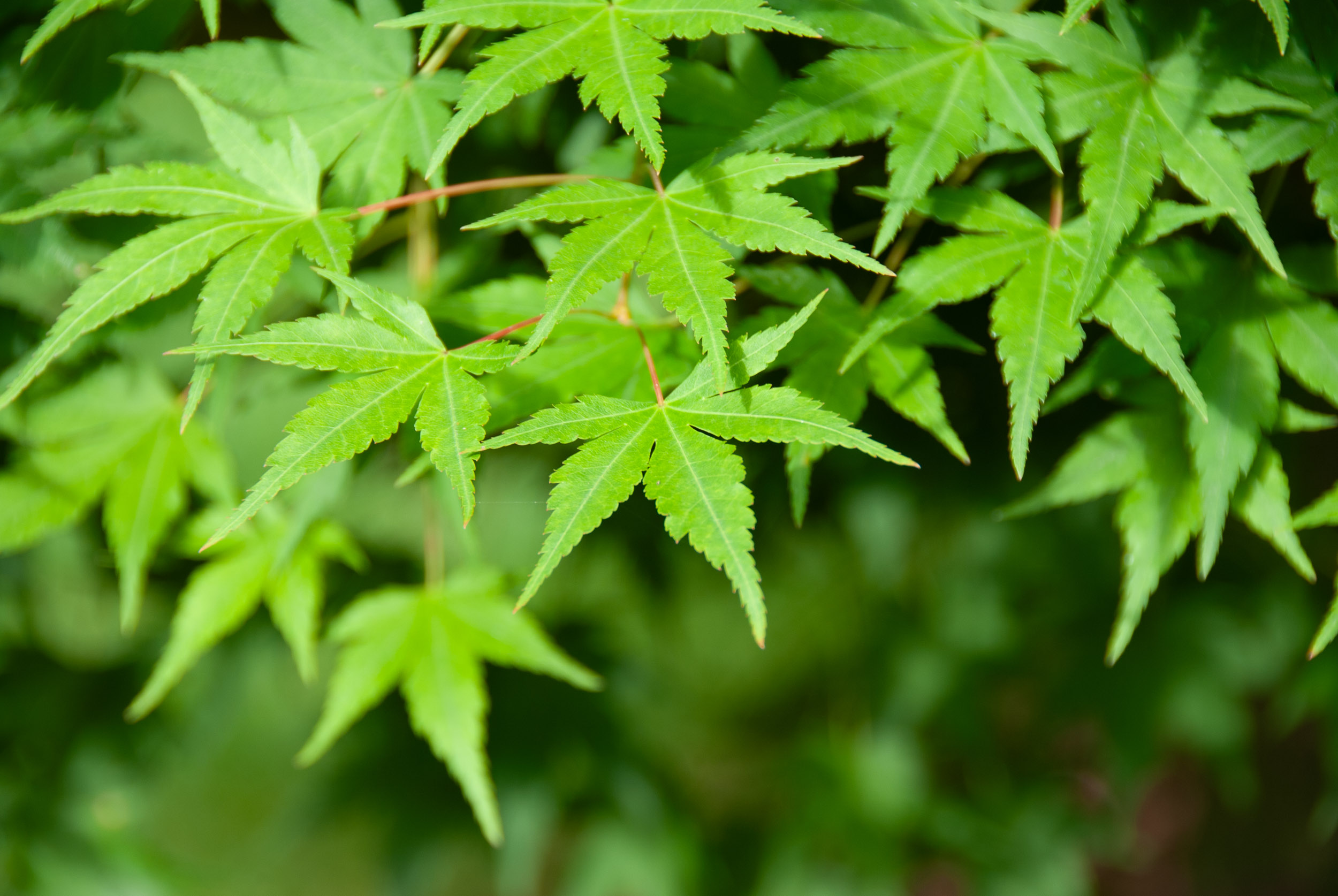
Botanical Name: Acer plantanoids
Common Name: Norway maple
Family: Sapindaceae
Distribution/Origin: Europe
Leaf: apex of lobes acutely pointed, deep burgundy, big leaves
Bud: single terminal bud
Flower: corymb inflorescence, yellow-green with 5 sepals and 5 petals
Fruit/Seed: double samara, wide angle, two winged seeds, disc shaped and flattened
Stem/Bark: light brown-grey, lightly fissured in youth, ridged in age
Size: 40-60’ height, 35-40’ spread
Habit: multi stemmed, ascending branches
Form: globose, uniformed
Soil Conditions: deep, rich, fertile, well drained
Moisture: evenly moist
Sun: full sun
Exposure: some shelter recommended, fast growing, branches may break in strong winds
Landscape Use: shade trees, street and park use
Notes: Creates very dense shade which can kill out turf beneath, also has a shallow root system which can cause damage to nearby sidewalks and paths by causing them to buckle.
Common Name: Norway maple
Family: Sapindaceae
Distribution/Origin: Europe
Leaf: apex of lobes acutely pointed, deep burgundy, big leaves
Bud: single terminal bud
Flower: corymb inflorescence, yellow-green with 5 sepals and 5 petals
Fruit/Seed: double samara, wide angle, two winged seeds, disc shaped and flattened
Stem/Bark: light brown-grey, lightly fissured in youth, ridged in age
Size: 40-60’ height, 35-40’ spread
Habit: multi stemmed, ascending branches
Form: globose, uniformed
Soil Conditions: deep, rich, fertile, well drained
Moisture: evenly moist
Sun: full sun
Exposure: some shelter recommended, fast growing, branches may break in strong winds
Landscape Use: shade trees, street and park use
Notes: Creates very dense shade which can kill out turf beneath, also has a shallow root system which can cause damage to nearby sidewalks and paths by causing them to buckle.
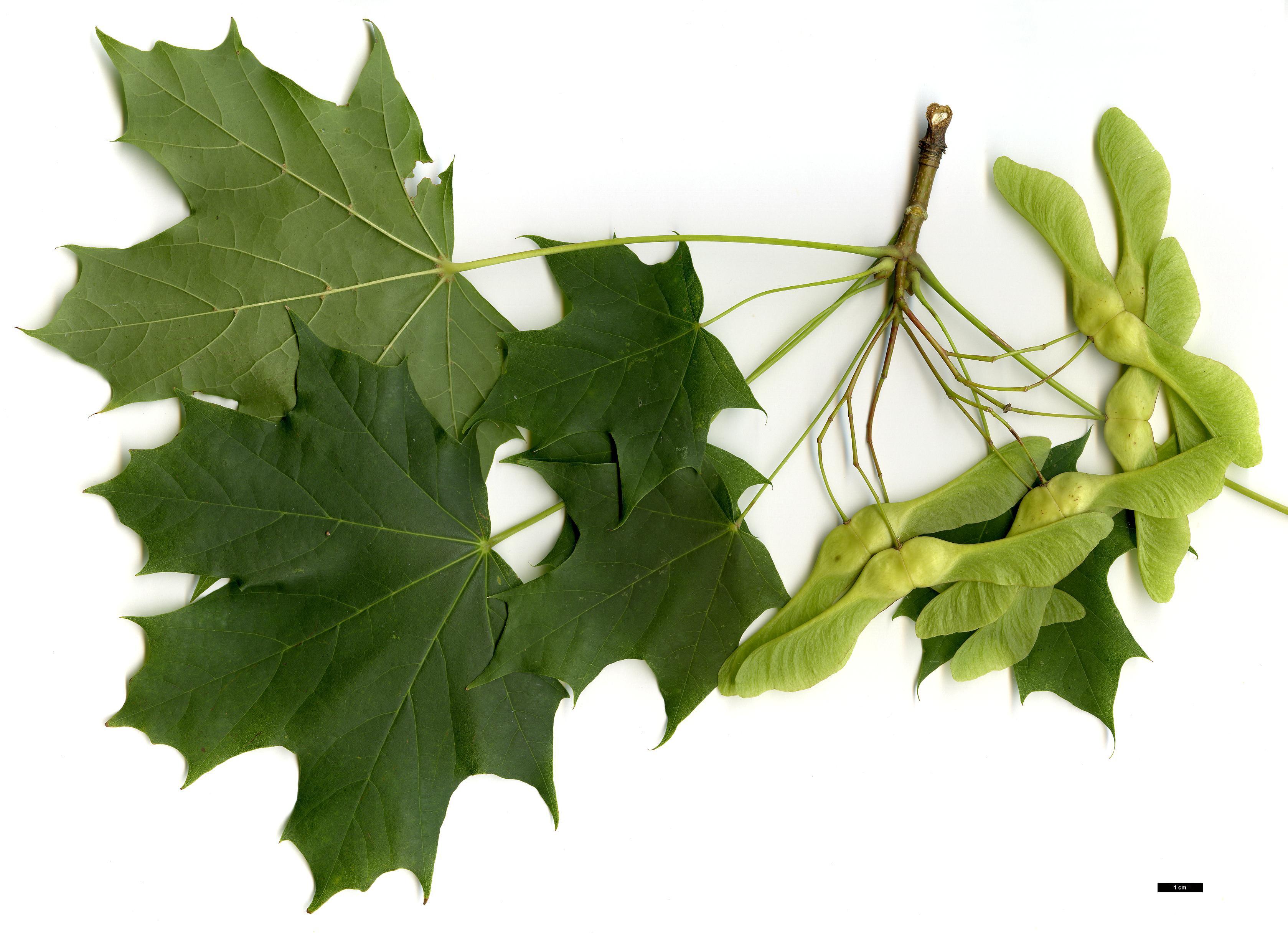

Botanical Name: Acer
saccharinum
Common Name: silver maple
Family: Sapindaceae
Distribution/Origin: North America
Leaf: palmately lobed, deep angular notches between lobes, silver downy undersides
Bud: multi cluster of round buds
Flower: dense clusters of green, hermaphrodite, insect and wind pollinated
Fruit/Seed: largest fruit of any maple, samaras bearing single seed
Stem/Bark: grey and shaggy in youth, smooth and silver-grey in maturity
Size: 49-92’ height, 36-49’ spread
Habit: ascending branches, multiple leaders, vertical vigorous water shoots
Form: globose, large canopy
Soil Conditions: deep, rich, well drained
Moisture: enjoys lots of water, will “search” for water (growing towards drain pipes, foundations, etc)
Sun: full to partial sun
Exposure: cannot handle high winds
Landscape Use: street tree, woodland garden
Notes: its quick growth rate produces brittle wood that causes branches to frequently break during wind storms
Common Name: silver maple
Family: Sapindaceae
Distribution/Origin: North America
Leaf: palmately lobed, deep angular notches between lobes, silver downy undersides
Bud: multi cluster of round buds
Flower: dense clusters of green, hermaphrodite, insect and wind pollinated
Fruit/Seed: largest fruit of any maple, samaras bearing single seed
Stem/Bark: grey and shaggy in youth, smooth and silver-grey in maturity
Size: 49-92’ height, 36-49’ spread
Habit: ascending branches, multiple leaders, vertical vigorous water shoots
Form: globose, large canopy
Soil Conditions: deep, rich, well drained
Moisture: enjoys lots of water, will “search” for water (growing towards drain pipes, foundations, etc)
Sun: full to partial sun
Exposure: cannot handle high winds
Landscape Use: street tree, woodland garden
Notes: its quick growth rate produces brittle wood that causes branches to frequently break during wind storms


Botanical Name: Acer shirasawanum
Common Name: full moon maple
Family: Sapindacae
Distribution/Origin: Japan
Leaf: broad, palmately veined, shallow incised lobes
Bud: open
Flower: corymb, 5 red-purple sepals with white petals, red stamens
Fruit/Seed: paired samaras, erect above leaves, bright red turning brown
Stem/Bark: smooth in youth and maturity
Size: 8-15m height
Habit: sub shrub, multi stemmed
Form: leaders grow upright, vertically, branches grow horizontally
Soil Conditions: well drained
Moisture: average watering needs, does not like to dry out
Sun: sun to partial shade
Exposure: somewhat sheltered, does not like full sun unless cooler summers
Landscape Use: gardens, streets, good for small spaces, under story
Notes:
Common Name: full moon maple
Family: Sapindacae
Distribution/Origin: Japan
Leaf: broad, palmately veined, shallow incised lobes
Bud: open
Flower: corymb, 5 red-purple sepals with white petals, red stamens
Fruit/Seed: paired samaras, erect above leaves, bright red turning brown
Stem/Bark: smooth in youth and maturity
Size: 8-15m height
Habit: sub shrub, multi stemmed
Form: leaders grow upright, vertically, branches grow horizontally
Soil Conditions: well drained
Moisture: average watering needs, does not like to dry out
Sun: sun to partial shade
Exposure: somewhat sheltered, does not like full sun unless cooler summers
Landscape Use: gardens, streets, good for small spaces, under story
Notes:

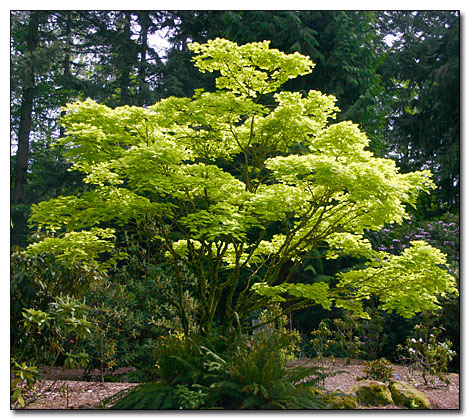
Botanical Name: Acer tataricum subsp. ginnala
Common Name: amur maple
Family: Sapindaceae
Distribution/Origin: Asia, eastern Russia
Leaf: opposite, simple, palmately lobed, coarsely/irregularly toothed, glossy surface
Bud: opposite, small
Flower: green-yellow, spreading panicles
Fruit/Seed: paired red samara
Stem/Bark: thin, dull brown-grey, smooth in youth, fissured with age
Size: 15-20’ height
Habit: multi stemmed shrub, small upright tree
Form: rounded, dense crown
Soil Conditions: adaptable as long as well drained
Moisture: even moisture
Sun: full sun to partial shade
Exposure: tolerant of temperature extremes
Landscape Use: residential property, small plantings
Notes: valued as a species suitable for bonsai
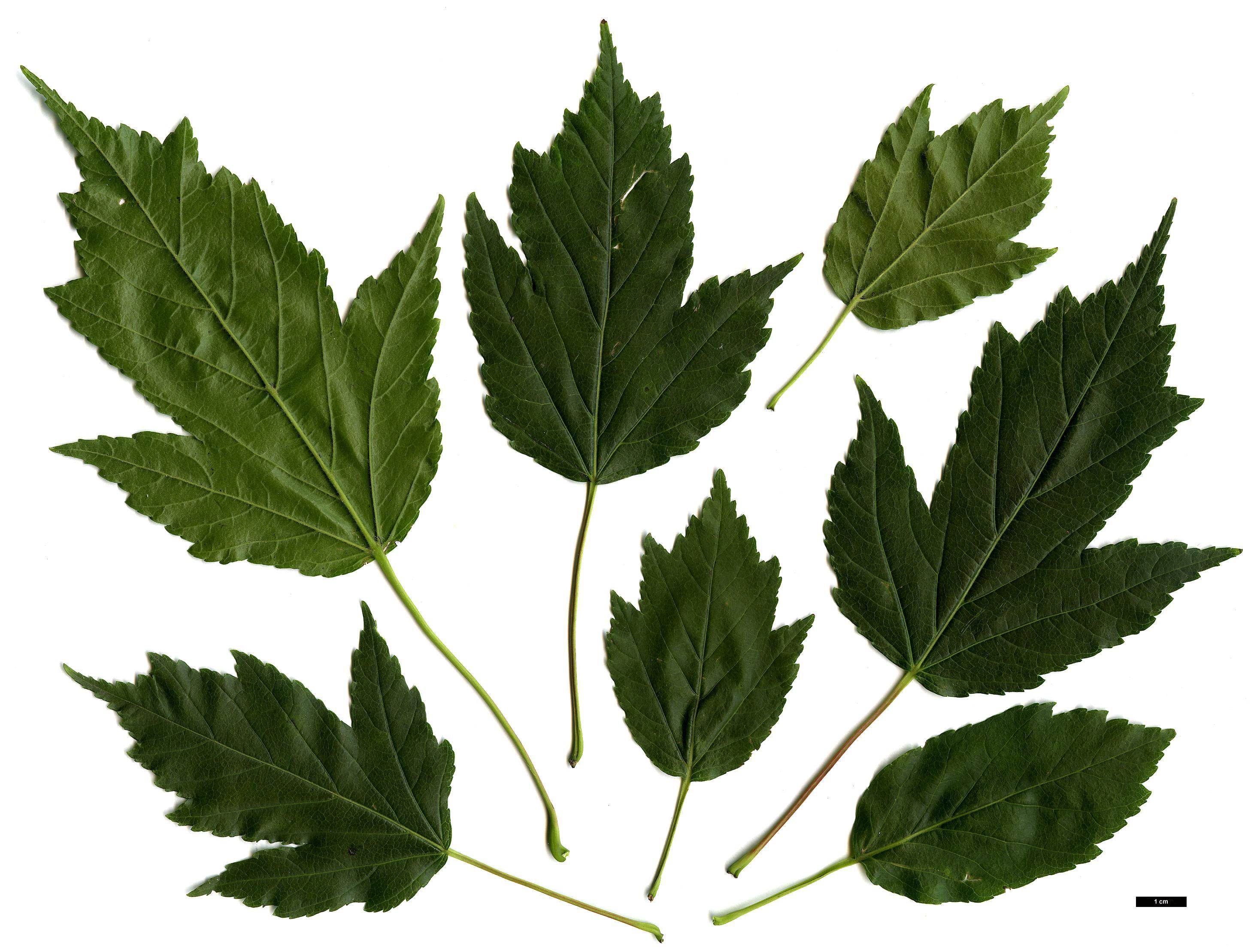
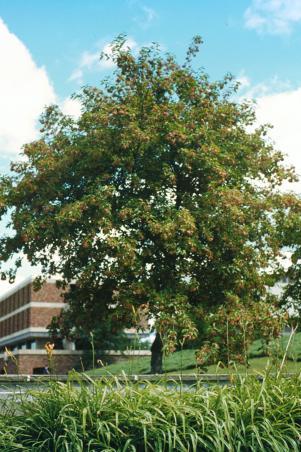
Botanical Name: Acer rubrum
Common Name: red maple
Family: Sapindaceae
Distribution/Origin: North America
Leaf: opposite, red petiole, palmate lobes, serrate margins
Bud: multi, clustered terminal, central bud
Flower: red 5 lobed calyx, hanging clusters
Fruit/Seed: long double samara, divergent wings
Stem/Bark: pale grey, smooth, darker and plated as it ages, lenticils on new growth
Size: 49’ height
Habit: open, undeveloped branch ends produce small twigs, doesn’t fill in, main leader
Form: pyramidal, ovate in maturity
Soil Conditions: adaptable to wide variety of soils
Moisture: doesn’t like to dry out
Sun: full sun to partial sun
Exposure:
Landscape Use: woodland garden, street trees
Notes: brilliant color, popular city tree. Also known as swamp tree due to its tendency to grow near wet sites.
Common Name: red maple
Family: Sapindaceae
Distribution/Origin: North America
Leaf: opposite, red petiole, palmate lobes, serrate margins
Bud: multi, clustered terminal, central bud
Flower: red 5 lobed calyx, hanging clusters
Fruit/Seed: long double samara, divergent wings
Stem/Bark: pale grey, smooth, darker and plated as it ages, lenticils on new growth
Size: 49’ height
Habit: open, undeveloped branch ends produce small twigs, doesn’t fill in, main leader
Form: pyramidal, ovate in maturity
Soil Conditions: adaptable to wide variety of soils
Moisture: doesn’t like to dry out
Sun: full sun to partial sun
Exposure:
Landscape Use: woodland garden, street trees
Notes: brilliant color, popular city tree. Also known as swamp tree due to its tendency to grow near wet sites.


Botanical Name: Cornus alba
Common Name: red bark dogwood
Family: Cornaceae
Distribution/Origin: Siberia, China, Korea
Leaf: variegated in some cultivars, opposite, accuminate tip, pinnate venation
Bud: buds set on wood from previous years growth, opposite
Flower: tiny, dense clusters, showy bracts, corymb like cymes, perfect
Fruit/Seed: ellipsoid, drupe, white
Stem/Bark: vivid red bark, smooth, heavily lenticiled
Size: 4-8’ height, 4-6’ spread
Habit: suckering, arching, open, spreading
Form: oval, round
Soil Conditions: adaptable to wide variety
Moisture: moist but well drained
Sun: sun to partial shade
Exposure:
Landscape Use: borders, beds, cottage gardens
Notes: extremely bright winter bark
Common Name: red bark dogwood
Family: Cornaceae
Distribution/Origin: Siberia, China, Korea
Leaf: variegated in some cultivars, opposite, accuminate tip, pinnate venation
Bud: buds set on wood from previous years growth, opposite
Flower: tiny, dense clusters, showy bracts, corymb like cymes, perfect
Fruit/Seed: ellipsoid, drupe, white
Stem/Bark: vivid red bark, smooth, heavily lenticiled
Size: 4-8’ height, 4-6’ spread
Habit: suckering, arching, open, spreading
Form: oval, round
Soil Conditions: adaptable to wide variety
Moisture: moist but well drained
Sun: sun to partial shade
Exposure:
Landscape Use: borders, beds, cottage gardens
Notes: extremely bright winter bark

Botanical Name: Cornus alternifolia
Common Name: alternate leaf dogwood
Family: Cornaceae
Distribution/Origin: North America
Leaf: elliptic to ovate, broad, arranged alternately on stems, crowded clusters, underside downy
Bud: sub opposite, alternating
Flower: small cream colored, grouped into cymes, perfect
Fruit/Seed: individual blue drupes
Stem/Bark: grey to brown, becoming ridged with age, close grained
Size: 25’ height, 20-32’ spread
Habit: tiered, umbrella like, loose, open
Form: somewhat irregular, more or less rounded
Soil Conditions: well drained, organically rich
Moisture: evenly moist
Sun: dappled to partial shade
Exposure: best planted on north or east sides of buildings, so it only has direct sunlight for part of the day
Landscape Use: ornamental plantings
Notes: one of the only members of the dogwood family to have alternate leaf formation
Common Name: alternate leaf dogwood
Family: Cornaceae
Distribution/Origin: North America
Leaf: elliptic to ovate, broad, arranged alternately on stems, crowded clusters, underside downy
Bud: sub opposite, alternating
Flower: small cream colored, grouped into cymes, perfect
Fruit/Seed: individual blue drupes
Stem/Bark: grey to brown, becoming ridged with age, close grained
Size: 25’ height, 20-32’ spread
Habit: tiered, umbrella like, loose, open
Form: somewhat irregular, more or less rounded
Soil Conditions: well drained, organically rich
Moisture: evenly moist
Sun: dappled to partial shade
Exposure: best planted on north or east sides of buildings, so it only has direct sunlight for part of the day
Landscape Use: ornamental plantings
Notes: one of the only members of the dogwood family to have alternate leaf formation

Botanical Name: Cornus controversa
Common Name: wedding cake tree
Family: Cornaceae
Distribution/Origin: Asia
Leaf: narrowly ovate, variegated
Bud: controversial opposite and alternate buds
Flower: showy white flowers, cymes
Fruit/Seed: blue droops
Stem/Bark: becomes fissured as it ages, heavy lenticils
Size: 20-30’ height, 20-30’ spread
Habit: multiple tiered branches, bushy
Form: pyramidal
Soil Conditions: well draining
Moisture: medium moisture
Sun: full sun to partial shade
Exposure: adaptable
Landscape Use: garden interest, woodland garden
Notes: called controversa due to the alternating and opposite bud habit
Common Name: wedding cake tree
Family: Cornaceae
Distribution/Origin: Asia
Leaf: narrowly ovate, variegated
Bud: controversial opposite and alternate buds
Flower: showy white flowers, cymes
Fruit/Seed: blue droops
Stem/Bark: becomes fissured as it ages, heavy lenticils
Size: 20-30’ height, 20-30’ spread
Habit: multiple tiered branches, bushy
Form: pyramidal
Soil Conditions: well draining
Moisture: medium moisture
Sun: full sun to partial shade
Exposure: adaptable
Landscape Use: garden interest, woodland garden
Notes: called controversa due to the alternating and opposite bud habit
Botanical Name: Cornus
florida
Common Name: eastern flowering dogwood
Family: Cornaceae
Distribution/Origin: North America
Leaf: opposite, simple, ovate, finely toothed margins
Bud: terminal buds are clove shaped, vegetative buds resemble a cat claw
Flower: white glaucus blooms, umbel
Fruit/Seed: 2-10 drupes, clustered
Stem/Bark: plated bark, grows in squares/plates
Size: 16-33’ height
Habit: multi stemmed, twiggy, horizontal grower, “gnarly”, dense
Form: domed, widely pyramidal
Soil Conditions: acidic, well drained
Moisture: evenly moist
Sun: partial sun
Exposure: morning shade, afternoon sun
Landscape Use: border accents, wooded landscaping
Notes: very hard wood; ideal for tool handles, golf club heads, butchers blocks etc
Common Name: eastern flowering dogwood
Family: Cornaceae
Distribution/Origin: North America
Leaf: opposite, simple, ovate, finely toothed margins
Bud: terminal buds are clove shaped, vegetative buds resemble a cat claw
Flower: white glaucus blooms, umbel
Fruit/Seed: 2-10 drupes, clustered
Stem/Bark: plated bark, grows in squares/plates
Size: 16-33’ height
Habit: multi stemmed, twiggy, horizontal grower, “gnarly”, dense
Form: domed, widely pyramidal
Soil Conditions: acidic, well drained
Moisture: evenly moist
Sun: partial sun
Exposure: morning shade, afternoon sun
Landscape Use: border accents, wooded landscaping
Notes: very hard wood; ideal for tool handles, golf club heads, butchers blocks etc

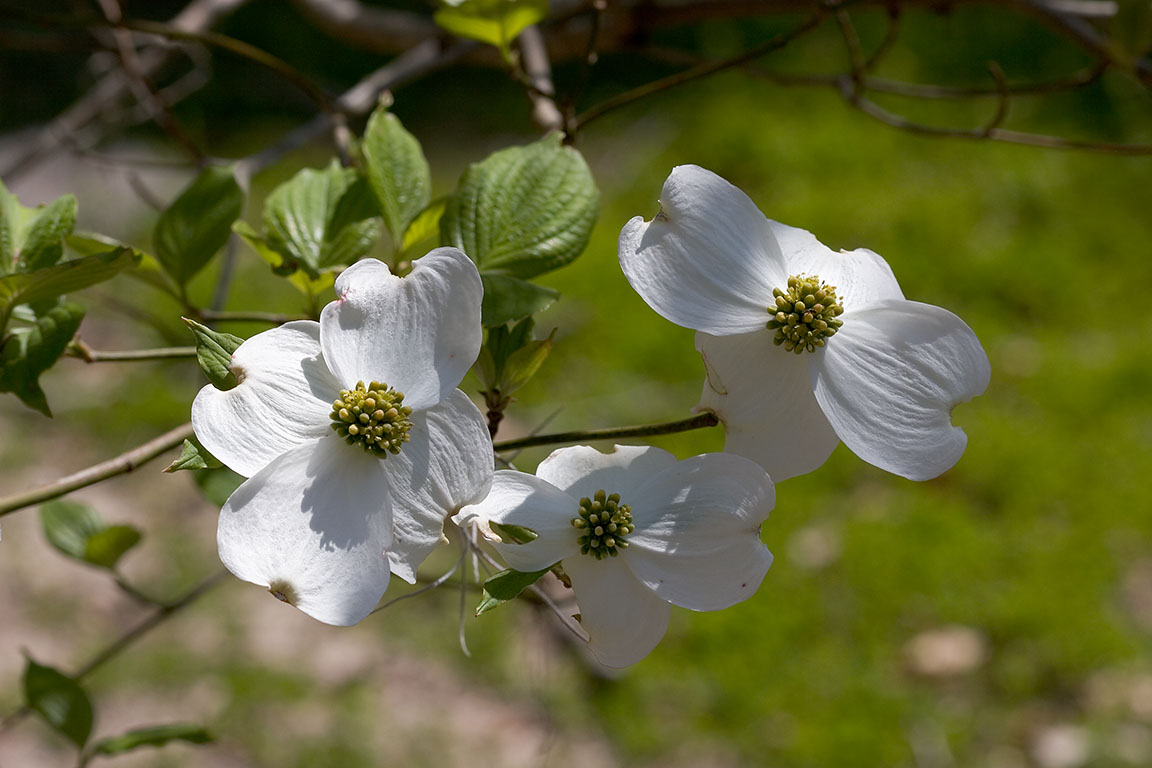
Botanical Name: Cornus kousa
Common Name: Japanese flowering dogwood
Family: Cornaceae
Distribution/Origin: Japan, China, Korea
Leaf: arcuate venation, acutely pointed, drip tips, simple
Bud: opposite bud arrangement, terminal bud varies in size
Flower: white flowers, modified leafs, bracts
Fruit/Seed: aggregate of drupes, compound
Stem/Bark: mottled exfoliating bark
Size: 30’ height, 30’ spread
Habit: multi stemmed, curved shoots, lateral branching
Form: vase shaped
Soil Conditions: fertile, acidic, high in organic matter
Moisture: requires consistent moisture/irrigation
Sun: full sun to partial shade
Exposure: excessive heat and wind exposure can cause problems
Landscape Use: groves, lawn tree, patio tree
Notes: the fruit is sometimes used for making wine
Common Name: Japanese flowering dogwood
Family: Cornaceae
Distribution/Origin: Japan, China, Korea
Leaf: arcuate venation, acutely pointed, drip tips, simple
Bud: opposite bud arrangement, terminal bud varies in size
Flower: white flowers, modified leafs, bracts
Fruit/Seed: aggregate of drupes, compound
Stem/Bark: mottled exfoliating bark
Size: 30’ height, 30’ spread
Habit: multi stemmed, curved shoots, lateral branching
Form: vase shaped
Soil Conditions: fertile, acidic, high in organic matter
Moisture: requires consistent moisture/irrigation
Sun: full sun to partial shade
Exposure: excessive heat and wind exposure can cause problems
Landscape Use: groves, lawn tree, patio tree
Notes: the fruit is sometimes used for making wine
Botanical Name: Cornus mas
Common Name: Cornelian cherry
Family: Cornaceae
Distribution/Origin: Southern Europe
Leaf: opposite, broad, ovate to oblong, entire margins
Bud: fat reproductive buds
Flower: small, clustered, yellow petals
Fruit/Seed: oblong red drupe
Stem/Bark: exfoliating bark, long “flakes”, water shoots help close wounds
Size: 5-12m height
Habit: horizontal branches
Form: umbrella, globous shaped
Soil Conditions: sandy loams, can grow in clay
Moisture: evenly moist
Sun: full sun to light shade
Exposure: can tolerate wind
Landscape Use: border, hedge, woodland garden
Notes: dense wood that will sink in water
Common Name: Cornelian cherry
Family: Cornaceae
Distribution/Origin: Southern Europe
Leaf: opposite, broad, ovate to oblong, entire margins
Bud: fat reproductive buds
Flower: small, clustered, yellow petals
Fruit/Seed: oblong red drupe
Stem/Bark: exfoliating bark, long “flakes”, water shoots help close wounds
Size: 5-12m height
Habit: horizontal branches
Form: umbrella, globous shaped
Soil Conditions: sandy loams, can grow in clay
Moisture: evenly moist
Sun: full sun to light shade
Exposure: can tolerate wind
Landscape Use: border, hedge, woodland garden
Notes: dense wood that will sink in water
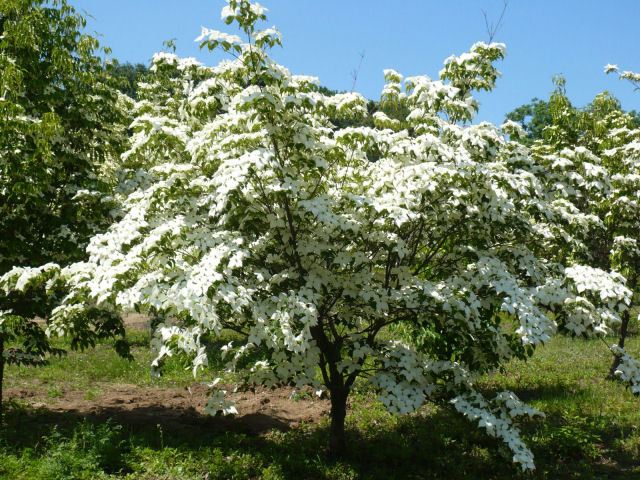

Botanical Name: Cornus nuttallii
Common Name: Pacific flowering dogwood
Family: Cornaceae
Distribution/Origin: Canada
Leaf: opposite, simple, oval, broad, slightly wavy margins
Bud: opposite, leaf buds small and pointed, large single flower buds
Flower: 6 showy bracts, dense, rounded
Fruit/Seed: compound berry, containing 50-100 seeds
Stem/Bark: thin and grey, smooth when young, rectangular plates with age
Size: 15-40’ height
Habit: multi trunks, horizontal branches
Form: rounded crown, dense
Soil Conditions: rich, well drained
Moisture: established trees become drought tolerant, does enjoy moisture in youth
Sun: sun to partial shade
Exposure: south to southwest
Landscape Use: ornamental, border, woodland garden
Notes: provincial flower of British Columbia
Common Name: Pacific flowering dogwood
Family: Cornaceae
Distribution/Origin: Canada
Leaf: opposite, simple, oval, broad, slightly wavy margins
Bud: opposite, leaf buds small and pointed, large single flower buds
Flower: 6 showy bracts, dense, rounded
Fruit/Seed: compound berry, containing 50-100 seeds
Stem/Bark: thin and grey, smooth when young, rectangular plates with age
Size: 15-40’ height
Habit: multi trunks, horizontal branches
Form: rounded crown, dense
Soil Conditions: rich, well drained
Moisture: established trees become drought tolerant, does enjoy moisture in youth
Sun: sun to partial shade
Exposure: south to southwest
Landscape Use: ornamental, border, woodland garden
Notes: provincial flower of British Columbia

Botanical Name: Cornus
stolonifera
Common Name: red twig dogwood
Family: Cornaceae
Distribution/Origin: North America
Leaf: opposite, acute apex, entire margins
Bud: opposite
Flower: corymb, white florets
Fruit/Seed: white-black/blue drupes, clustered
Stem/Bark: crimson red, turning green with age, heavily lenticiled
Size: 3-6’ height, 10-15’ spread
Habit: sub shrub, multi stemmed, dense, spreads by suckering
Form: rounded
Soil Conditions: adaptable to wide range of soils
Moisture: evenly moist
Sun: full sun to partial shade
Exposure: can withstand damp conditions, even “swamp like”
Landscape Use: border plant, mass plantings, spring/winter interest
Notes: bright red bark provides a welcome hint of color during cold season months
Common Name: red twig dogwood
Family: Cornaceae
Distribution/Origin: North America
Leaf: opposite, acute apex, entire margins
Bud: opposite
Flower: corymb, white florets
Fruit/Seed: white-black/blue drupes, clustered
Stem/Bark: crimson red, turning green with age, heavily lenticiled
Size: 3-6’ height, 10-15’ spread
Habit: sub shrub, multi stemmed, dense, spreads by suckering
Form: rounded
Soil Conditions: adaptable to wide range of soils
Moisture: evenly moist
Sun: full sun to partial shade
Exposure: can withstand damp conditions, even “swamp like”
Landscape Use: border plant, mass plantings, spring/winter interest
Notes: bright red bark provides a welcome hint of color during cold season months


Botanical Name: Cornus
unalaschkensis
Common Name: bunchberry
Family: Cornaceae
Distribution/Origin: Canada, Alaska, eastern Russia
Leaf: evergreen, 1 whorl of leaves at top, narrowly ovate, prominent veins
Bud:
Flower: corymb, large showy white bracts, toonie sized flowers
Fruit/Seed: bright red drupe, needs to be pollinated
Stem/Bark:
Size: 4-8” height, 2’ spread
Habit: low growing, spreading, subshrub, rhizomatous
Form: matting
Soil Conditions: spongy soil, aerated, organic
Moisture: dampness, will grow in logs, boggy environments
Sun: shady areas
Exposure:
Landscape Use: collection, woodland area
Notes: one of the smallest dogwoods
Common Name: bunchberry
Family: Cornaceae
Distribution/Origin: Canada, Alaska, eastern Russia
Leaf: evergreen, 1 whorl of leaves at top, narrowly ovate, prominent veins
Bud:
Flower: corymb, large showy white bracts, toonie sized flowers
Fruit/Seed: bright red drupe, needs to be pollinated
Stem/Bark:
Size: 4-8” height, 2’ spread
Habit: low growing, spreading, subshrub, rhizomatous
Form: matting
Soil Conditions: spongy soil, aerated, organic
Moisture: dampness, will grow in logs, boggy environments
Sun: shady areas
Exposure:
Landscape Use: collection, woodland area
Notes: one of the smallest dogwoods
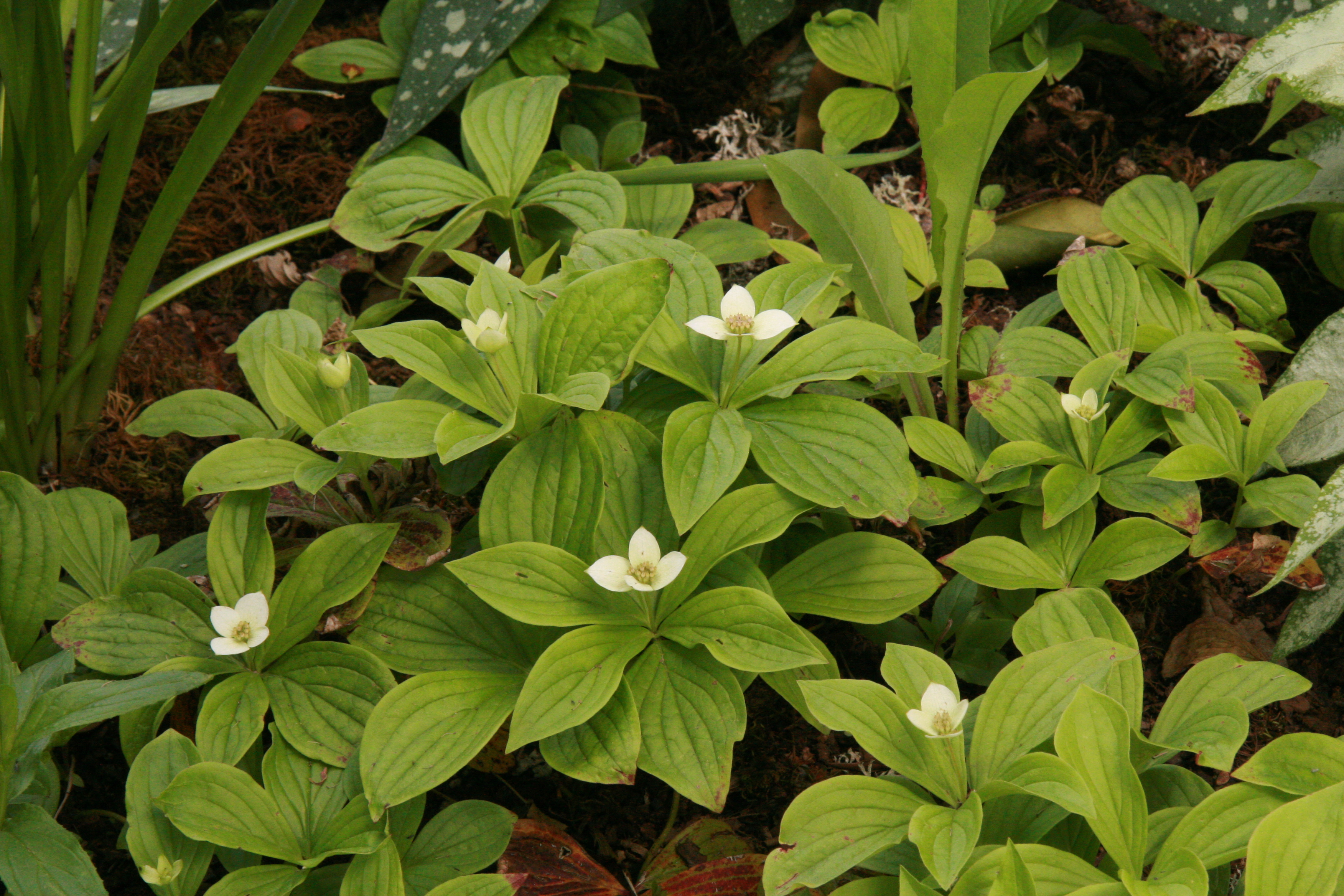

Botanical Name: Cornus
x ‘Eddie’s White Wonder’
Common Name: Eddies white wonder
Family: Cornaceae
Distribution/Origin:
Leaf: simple, opposite, ovate, serrulate margins
Bud: winter terminal buds look like chicken feet
Flower: vigorous bloomer, overlapping false petals/bracts
Fruit/Seed: red drupes with spiny surface
Stem/Bark: plated, brown
Size: 20-30’ height, 15-20’ spread
Habit: vertical, upright, central leader, tiered branching, arching
Form: columnar, open
Soil Conditions: well drained, rich, can tolerate clay
Moisture: evenly moist until well established
Sun: full sun to partial shade
Exposure: sheltered or exposed
Landscape Use: accent plant, shade tree, spring interest
Notes: cross between Cornus florida and Cornus nuttellii
Common Name: Eddies white wonder
Family: Cornaceae
Distribution/Origin:
Leaf: simple, opposite, ovate, serrulate margins
Bud: winter terminal buds look like chicken feet
Flower: vigorous bloomer, overlapping false petals/bracts
Fruit/Seed: red drupes with spiny surface
Stem/Bark: plated, brown
Size: 20-30’ height, 15-20’ spread
Habit: vertical, upright, central leader, tiered branching, arching
Form: columnar, open
Soil Conditions: well drained, rich, can tolerate clay
Moisture: evenly moist until well established
Sun: full sun to partial shade
Exposure: sheltered or exposed
Landscape Use: accent plant, shade tree, spring interest
Notes: cross between Cornus florida and Cornus nuttellii


No comments:
Post a Comment